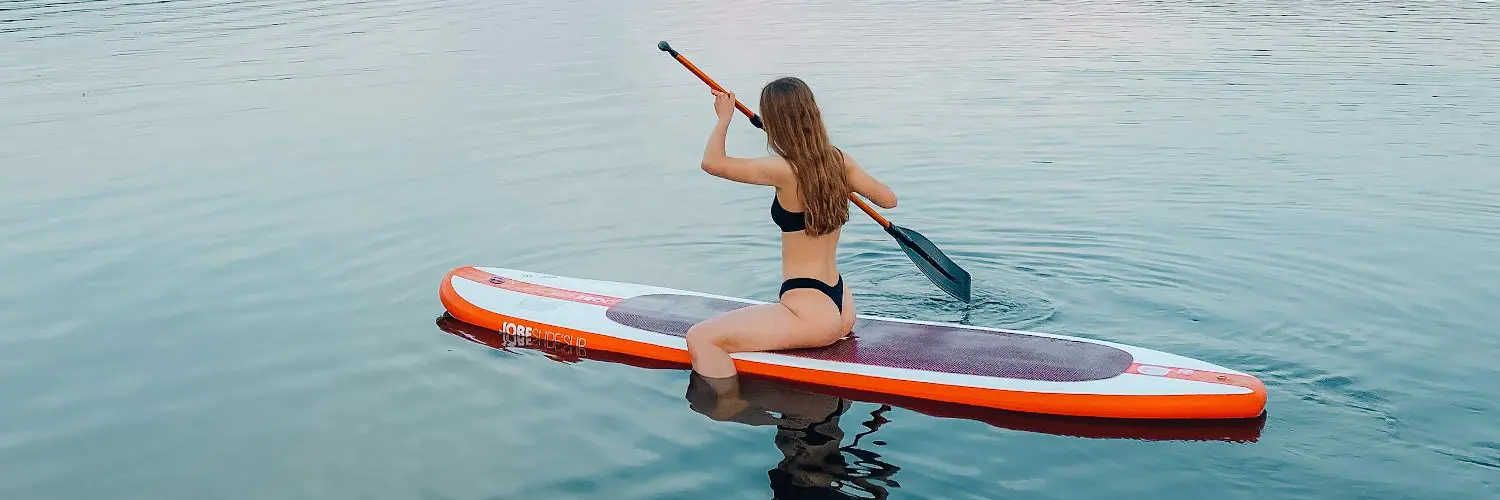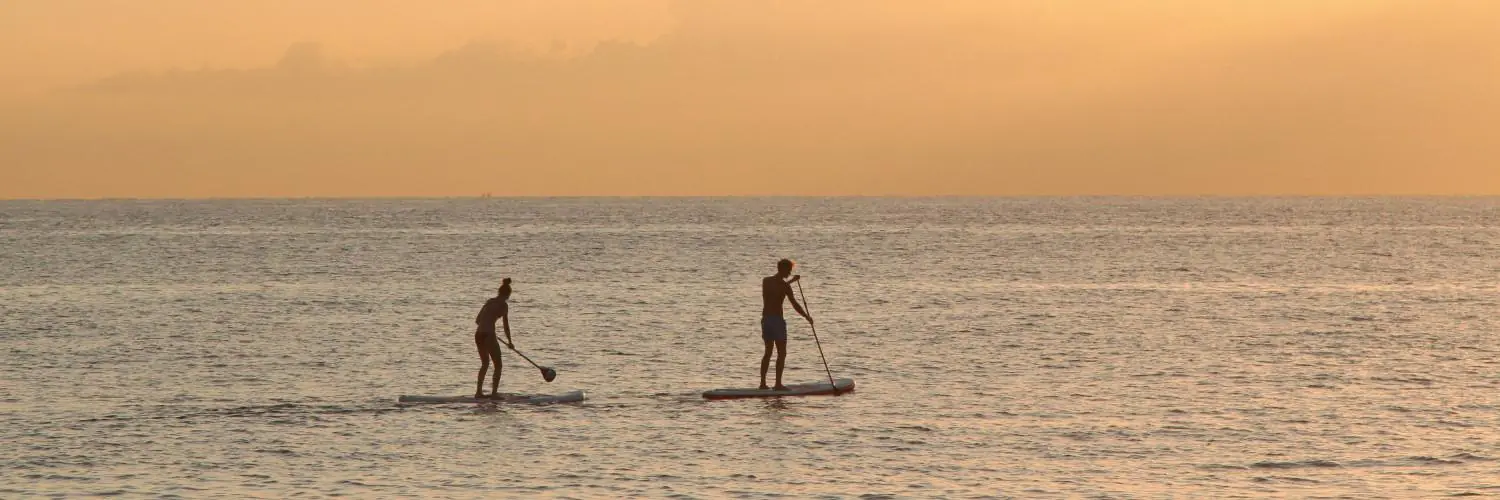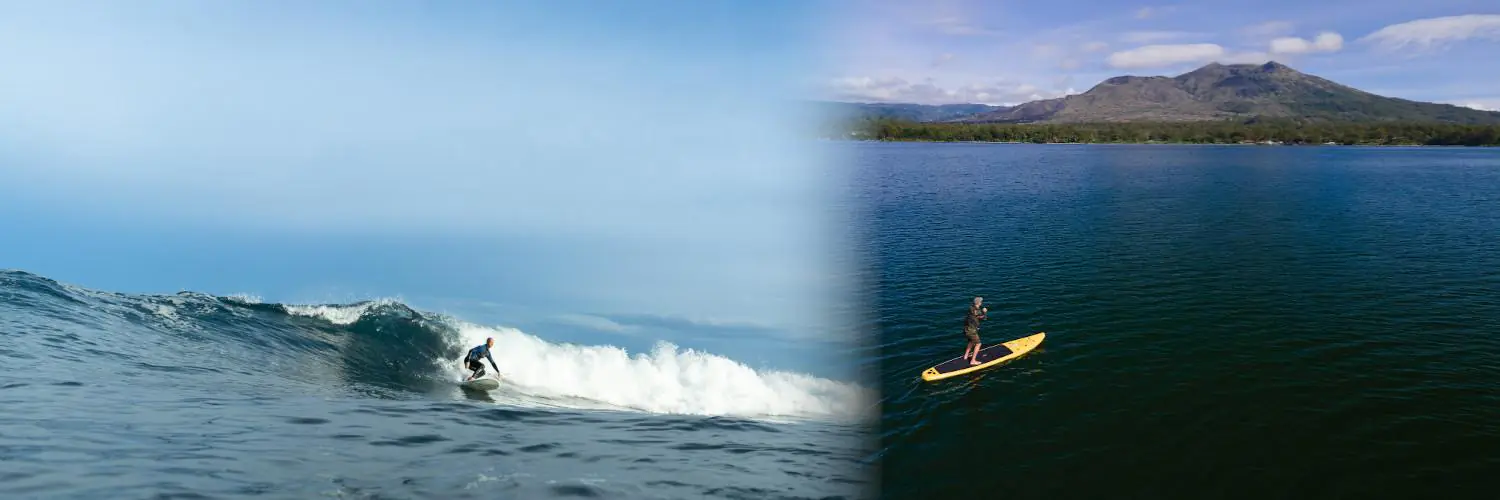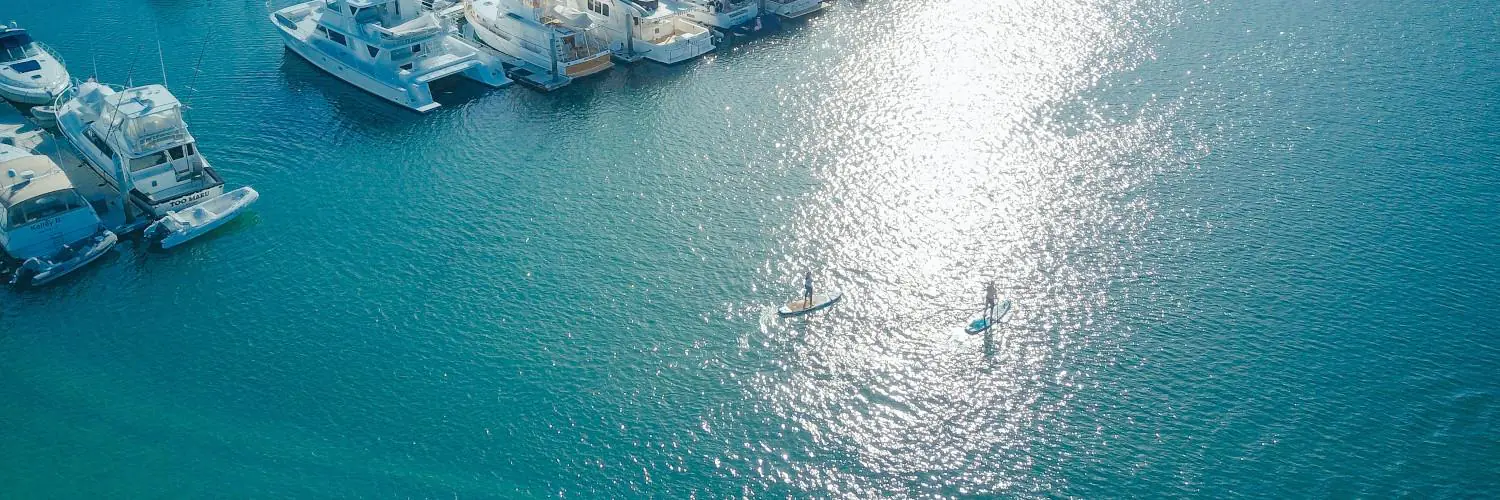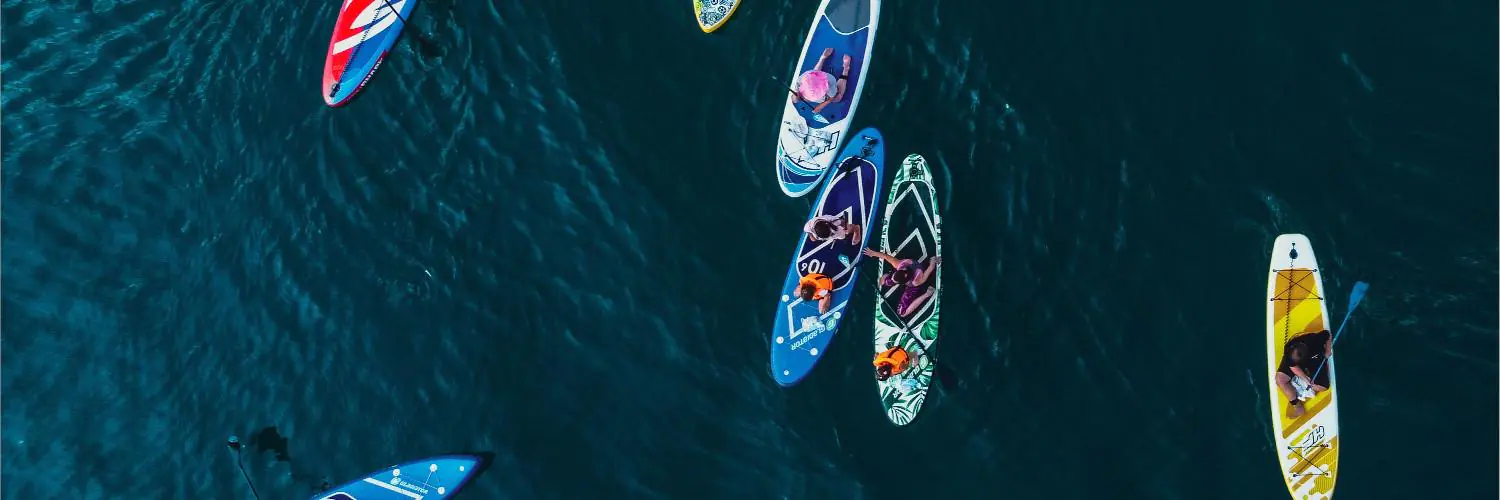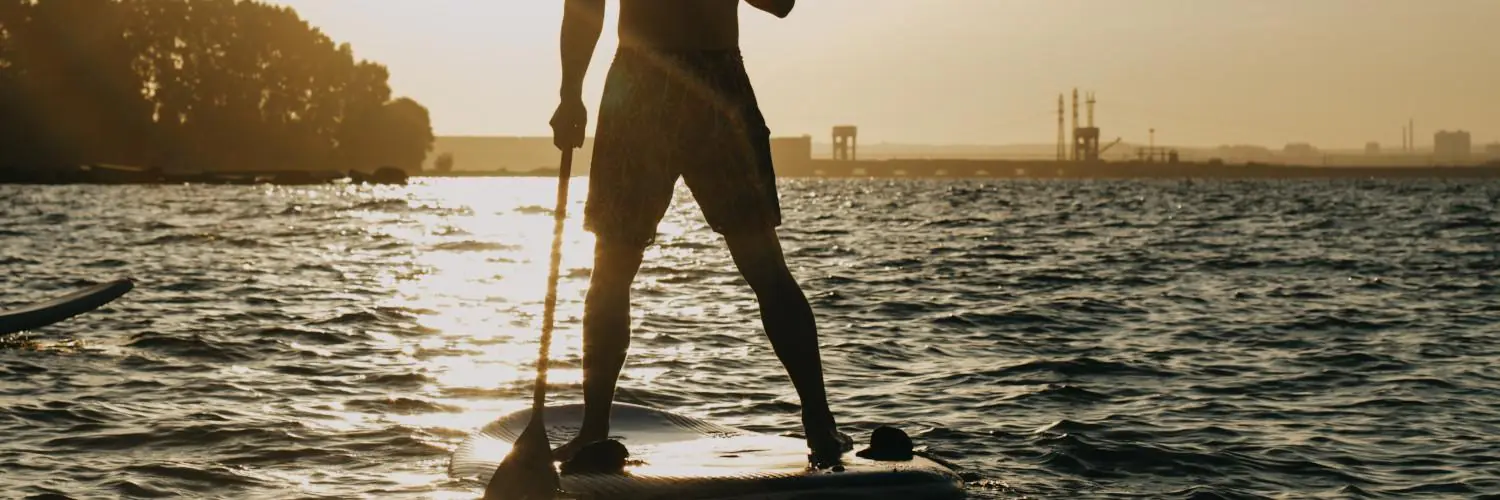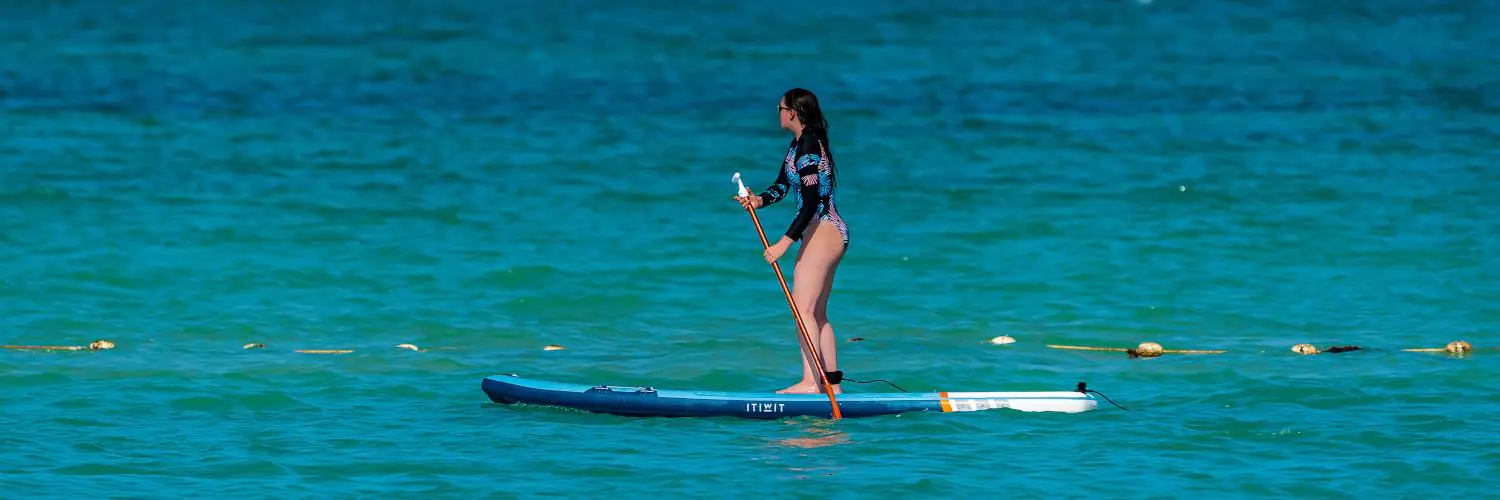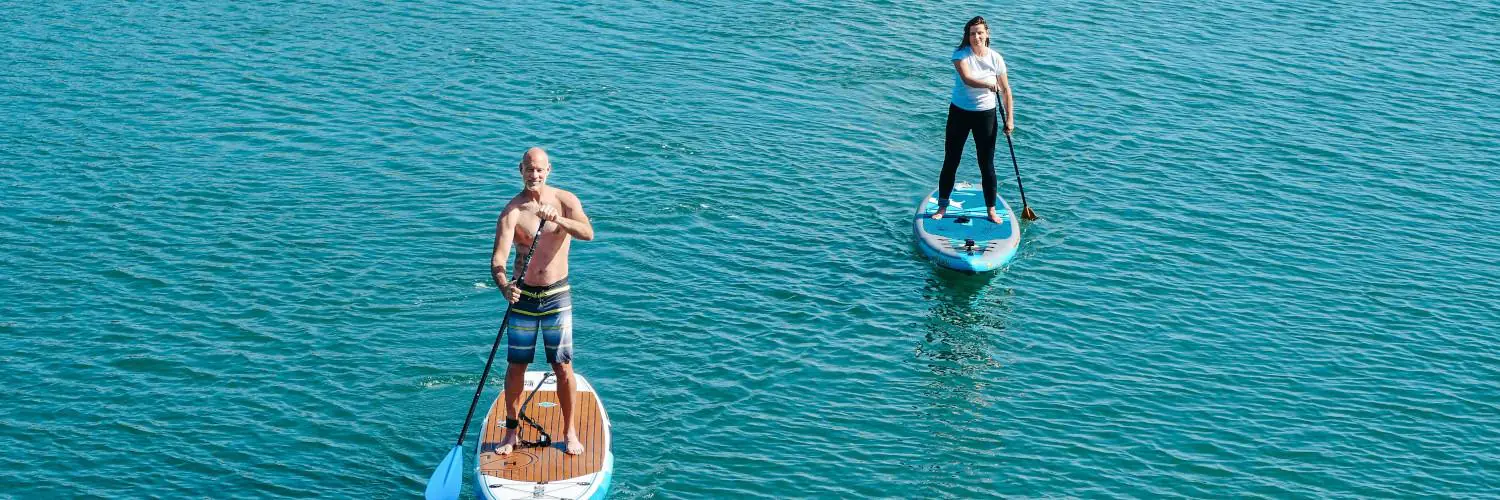Table of Contents
Is SUP Easier Than Surfing?
Paddle boarding is easier than surfing as it can be done on any water body, such as a lake or stream, where the water is generally flat and you don’t have to tackle any wind or waves. It requires only basic skills of balancing and standing, while surfing requires special skills of riding the waves. Catching a wave is certainly easier than riding and riding for a certain period of time makes it even difficult. With a SUP, you can do a variety of different activities while surfing is generally the tackling of waves. Most surfers agree that stand up paddle boarding is easier than surfing as it involves riding and paddling through a wave much sooner than with a surfboard. Paddling is a significant challenge in both learning surfing and SUP paddle boarding. The big difference is that on a surfboard, you paddle in prone position, while on a stand up paddleboard, you paddle standing up.
Which is harder? At first sight, it may seem like paddling lying down is a lot easier than standing up on moving water. While prone paddling is more stable, efficient paddling on a surfboard is not easy and is a key aspect to master to become a good surfer. Paddling while lying on your belly is not natural and puts a strain on your body. Your lower back and neck are extended as you look out towards incoming waves. Your shoulders are raised from the board in an awkward position. Initially on a surfboard, you may struggle to keep your balance even in prone position as the waves pass you by, let alone keep your feet together as you should.
On a paddleboard, you need to stand up before you paddle. Typically you’ll start with a big SUP, say 10-11′ long by 30+” wide, so you’ll feel relatively stable. You’ll also start with small waves.
If you’re fitness level is decent, you should be able to get up and stay up within a few hours of practice. Once you do, paddling comes quite naturally for most people – paddling actually helps you keep your balance on the SUP. While a newbie typically starts paddling on a SUP within a couple hours in tiny waves, efficiently prone paddling through whitewater on a surfboard may require more practice.
Once you have the basic paddling skills down, the next challenge for both surfing and SUP is getting up to the lineup, or peak, to catch waves. This requires you to paddle across incoming waves. Once you have the basic paddling skills down, the next challenge for both surfing and SUP is getting up to the lineup, or peak, to catch waves. This requires you to paddle across incoming waves.
On a surfboard, you typically sit on your board while you wait. Sitting on a small board isn’t very natural at first and requires some balance, but it quickly becomes second nature.
On the SUP, you generally stand while you wait. Since the water surface is rarely completely flat and calm, that can be a challenge in itself. You need to constantly adjust your position not to lose balance as currents and small waves go by.
As a wave comes in, you need to turn around from facing toward the wave to facing toward the beach. That’s quite easy to do on a surfboard – you typically turn around while sitting on the board just by treading water with your hands. On a SUP, turning around while standing is generally a bigger challenge. You could of course paddle into a large U turn, but many times time is short and you need to “turn on a dime”. This requires good technique.
Conclusion
SUP boarding is certainly easier than the surfing to get started. It is certainly recommended for the beginners to stand up on the board and paddle through than riding the wave.

